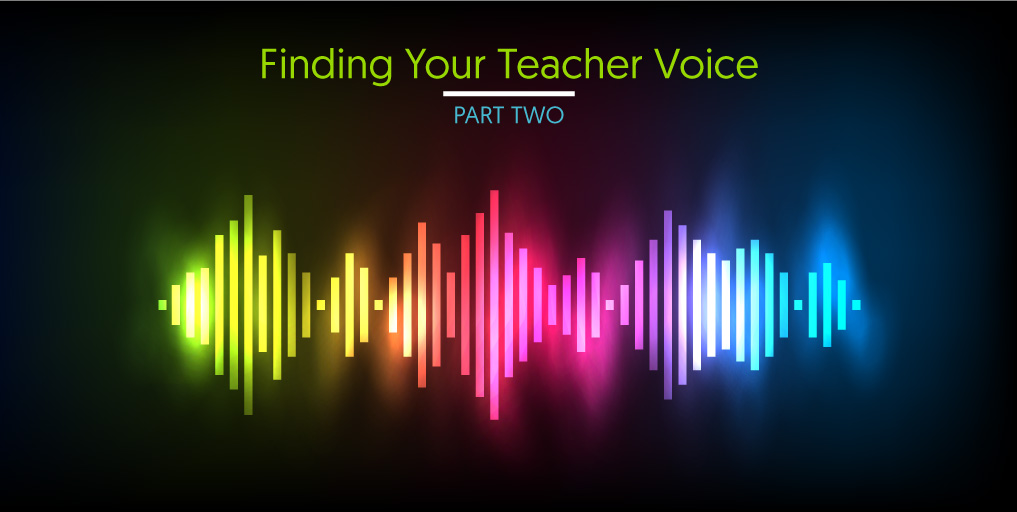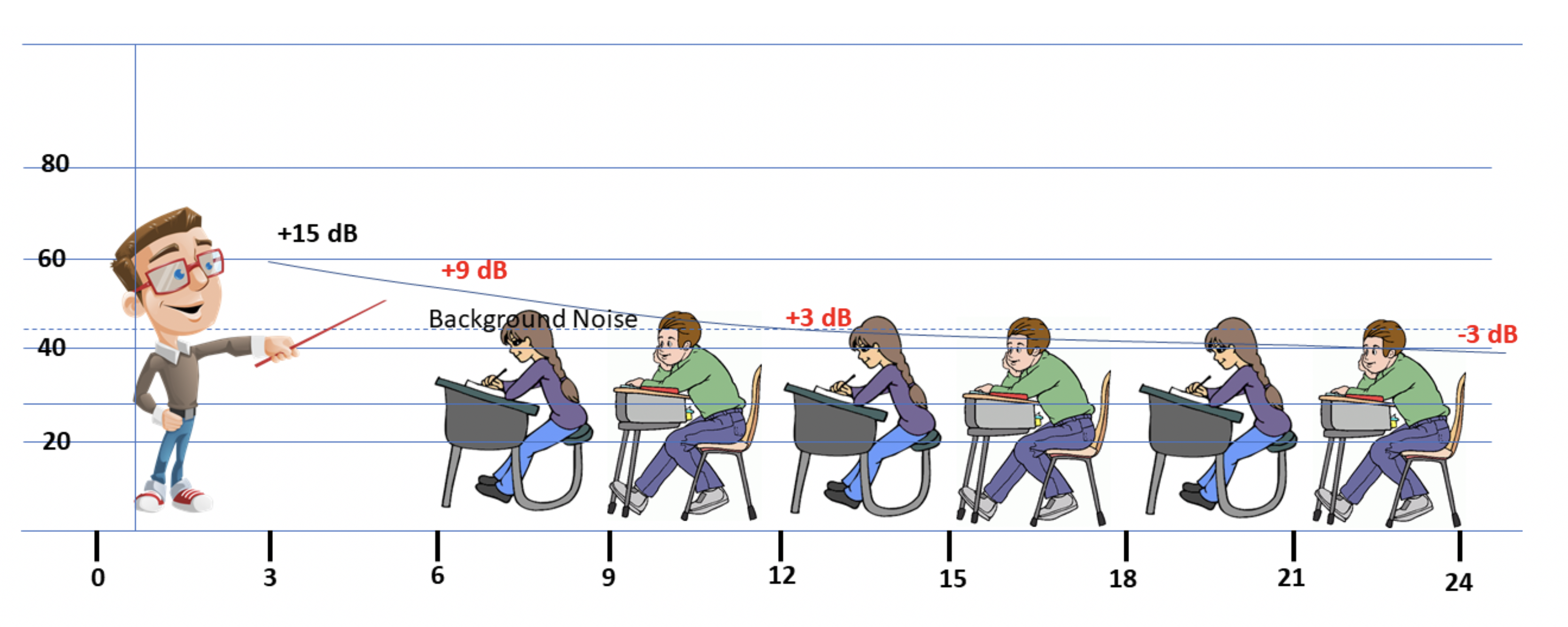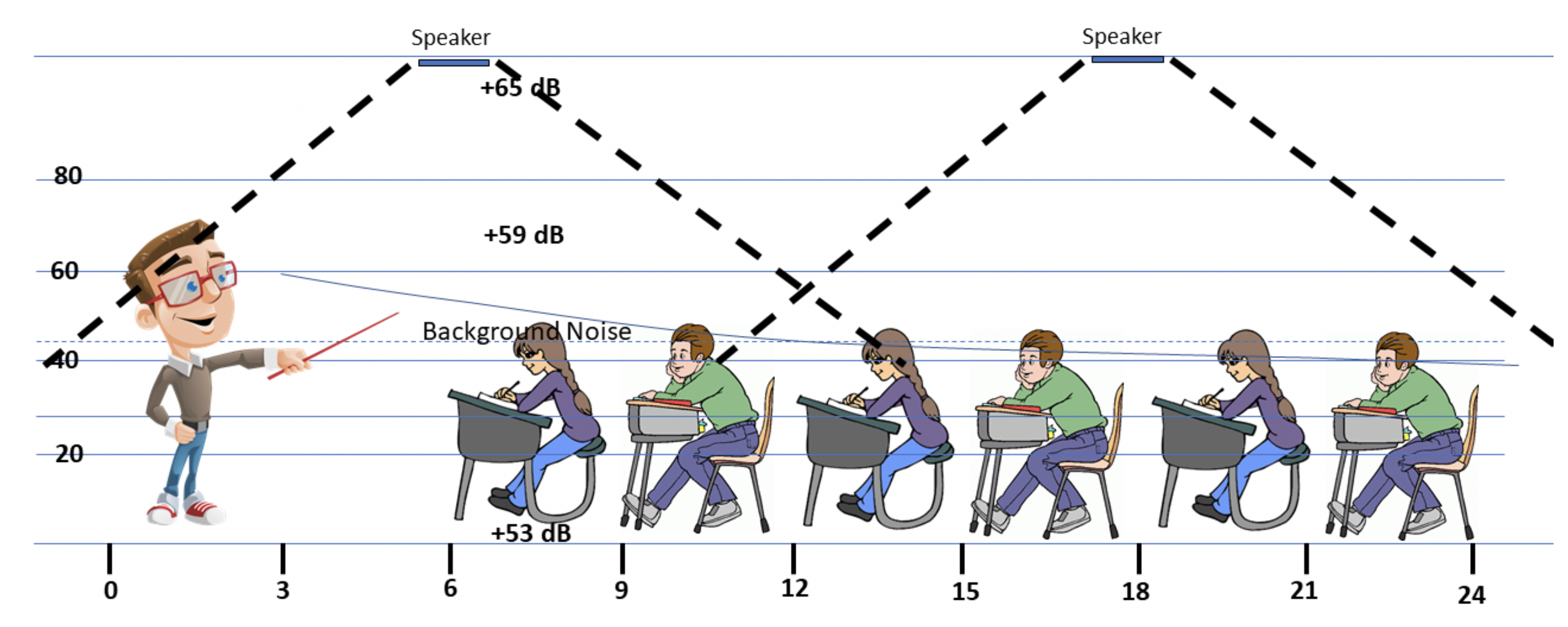
In the first part of this series, I covered the various challenges that teachers face when dealing with sound in the classroom. When taking hearing loss, distance, and sound absorption into consideration, it can be hard for educators to find their teacher voice. So, what allows educators to be heard and can help improve teaching and learning in the classroom?
When I stand in front of a classroom today, I am a different person. Sure, I’m older than I will admit, but more importantly, I speak as if I’m 18 inches away from the person with whom I am engaging. I can do this through technology: a microphone, an amplifier, and speakers.
Today, I put on my MimioClarity™ classroom audio system microphone, coupled with my classroom amplifier and speaker. I speak at a conversational voice level and tone as if I am 18 inches from my students. I can whisper or raise my voice for effect and every student in my room—no matter where they sit—can hear me. Something as simple as distributing my voice through four speakers in my classroom has forever changed my tone and allowed me to find my real voice and let go of my teacher voice.
Clearly Getting Through to Students
So, how does a classroom microphone, amplifier, and speakers make such a difference? Consider the child in the classroom who is not paying attention. This child is routinely off task, doesn’t follow instruction, and likely earns poor grades as a result. We may move the student to a different location in the room or ask a specialist to evaluate the child for a learning disability, but the one challenge we often overlook is the student’s ability to hear the instruction. Hearing and learning are often connected—whether a child has a mild or severe hearing loss, the hearing loss will have a negative impact on the student’s performance, and often their behavior as well.
Through the use of technology, we have the ability to better control and overcome the challenges of sound absorption in the room, and to present audio in a more uniform matter throughout the classroom—regardless of the location of the instructor. Through technology, we have the ability to counteract hearing losses for students in need, and to provide audio to the students with a clear level of intelligibility, which will aid in their learning. In short, we can provide clarity to the classroom.
The MimioClarity classroom audio system is simple. An amplifier and four speakers have been installed in my classroom. For larger spaces, the system can be expanded to six or eight speakers. Connected to the amplifier is my computer, allowing any multimedia audio to be presented to my students. Finally, I put on my microphone (turning it on, of course!). Now I go about my day teaching my lessons.
One of the features I love most about this system is that it allows me to move about the room as I teach without disrupting the students’ ability to hear my instruction. If I need to have a private conversation with a student, I can mute the microphone. Truthfully, this system does even more, but allowing students to hear my instruction is the most important to me!
Clear From the Front Row to the Last
Words are wonderful and can help convey how the sound travels through the room and drops in volume—or, as we have read, the intensity. Personally, I like pictures. Below you will find two graphics to help illustrate what the sound (and physics) is like in the classroom.
A good signal-to-noise ratio is +15dB above the background noise of the classroom. The image below shows that within six feet of the teacher, the signal-to-noise level has dropped. By the time our voice gets to the back row of the classroom, the noise level is well below the level of background noise.

If we modify the classroom with speakers located strategically around the room, we can not only amplify the teacher’s voice, we can also ensure that every student in the room will be in a position to hear the teacher’s voice as well as all other multimedia audio at a level +15dB above the background noise.

Admittedly these images oversimplify the difference a microphone, amplifier, and speakers make in the classroom, but sometimes things really are as simple as they appear. The MimioClarity classroom audio system has many features beyond just amplifying my voice. Most important to me, it allows my students to hear my real voice in an atmosphere conducive to learning.
Want to learn more about the new MimioClarity classroom audio system? Click here to discover how easy it is to amplify learning throughout your classroom.



